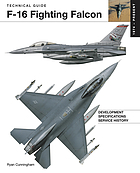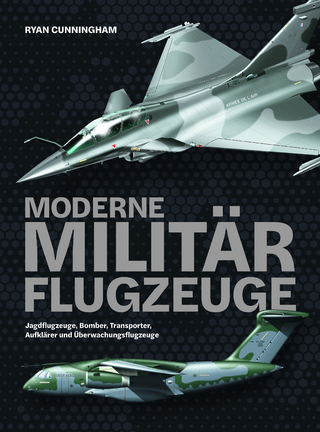
F-16 Fighting Falcon
Amber Books Ltd (Verlag)
978-1-83886-325-8 (ISBN)
With its iconic bubble canopy and advanced helmet-mounted displays, the F-16 Fighting Falcon is one of the supreme Fourth Generation air-superiority fighters in the world today. First flown by the US Air Force in the mid 1980s, Lockheed Martin have since delivered about 4,600 F-16s to over 25 countries and more than 3,000 F-16 fighters are currently operational worldwide. The Fighting Falcon is highly adaptable and has proven itself in air-to-air combat and air-to-surface attack in a variety of conflicts over the last 40 years.
The F-16’s versatility and durability has meant it can be adapted to a number of roles, including air superiority, reconnaissance and ground attack. In an air combat role, the F-16’s maneuverability and combat radius exceed that of all potential threat fighter aircraft. USAF F-16 multirole fighters were deployed to the Persian Gulf in 1991 in support of Operation Desert Storm, where more sorties were flown than with any other aircraft. These fighters were used to attack airfields, Scud missiles sites and a key military infrastructure. Other allied air forces, such as Israel, have heavily adapted the F-16 for their own use, and the Israeli F-16I Soufa (Storm) has proved itself in numerous combat situations in the 21st century. Today, constant technology and weapons’ upgrades mean the F-16 is planned to serve through to 2060.
Packed with 100 vivid artworks and photographs, F-16 Fighting Falcon is a compact reference guide for lovers of this iconic aircraft and aviation enthusiasts.
Ryan Cunningham is an aviation and defence writer and editor who has worked on numerous aviation books and magazines over the last 20 years.
Contents:
Introduction: A Lightweight Fighter
The F-16 fighting falcon was built under an unusual agreement creating a consortium between the United States and four NATO countries: Belgium, Denmark, the Netherlands and Norway. These countries jointly produced with the United States an initial 348 F-16s for their air forces.
1: F-16A/B
The F-16A, a single-seat model, first flew in December 1976. The first operational F- 16A was delivered in January 1979 to the 388th Tactical Fighter Wing at Hill Air Force Base, Utah. The F-16B, a two-seat model, has tandem cockpits that are about the same size as the one in the A model.
2: F-16C/D
All F-16s delivered since November 1981 have built-in structural and wiring provisions and systems architecture that permit expansion of the multirole flexibility to perform precision strike, night attack and beyond-visual-range interception missions. This improvement program led to the F-16C and F-16D aircraft, which are the single- and two-place counterparts to the F-16A/B, and incorporate the latest cockpit control and display technology.
FEATURE: F-16I Sufa (Storm)
The F-16I is a two-seat variant of the Block 52 developed for the Israeli Defense Force. Israel issued a requirement in September 1997 and selected the F-16 in preference to the F-15I in July 1999. An initial contract was signed on 14 January 2000 for a total procurement of 102 aircraft. The F-16I, which is called Sufa (Storm) by the IDF/AF, first flew on 23 December 2003, and deliveries to the IDF/AF began on 19 February 2004.
3: F-16N – US Navy model
The F-16N was an adversary aircraft operated by the United States Navy. It is based on the standard F-16C/D Block 30. The F-16N has a strengthened wing and is capable of carrying an Air Combat Maneuvering Instrumentation (ACMI) pod on the starboard wingtip. Although the single-seat F-16Ns and twin-seat (T)F-16Ns are based on the early-production small-inlet Block 30 F-16C/D airframe, they retain the APG-66 radar of the F-16A/B. In addition, the aircraft’s 20mm cannon has been removed, as has the ASPJ, and they carry no missiles.
4: F-16E/F Desert Falcon
F-16E (single seat) and F-16F (two seat). The F-16E/F designation now belongs to a version developed especially for the United Arab Emirates Air Force, and is sometimes unofficially called the ‘Desert Falcon’.
5: Export Models: F-16IN Super Viper & F-16V Viper
Lockheed Martin has described the F-16IN as ‘the most advanced and capable F-16 ever.’ Based closely on the F-16E/F Block 60 supplied to the UAE, the features on the F-16IN include Conformal fuel tanks (CFTs); AN/APG-80 active electronically scanned array (AESA) radar, GE F110-132A engine; electronic warfare suite and infra-red searching (IRST); advanced all-color glass cockpit; and a helmet-mounted cueing system.
The F-16V is dubbed the ‘Viper’, which is intended to better operate with fifth- generation fighters, and should not be confused with Lockheed's F-16IN Block 70/72 ‘Super Viper. The F-16V is being delivered to the Royal Bahraini Air Force, Hellenic Air Force, Republic of Korea Air Force, Turkish Air Force and Slovak Air Force.
6: Special Mission Variants
A-16 – The A-16 began as a late-1980s GD project to develop a close air support (CAS) version of the basic F-16 by adding armor and strengthening the wings for a heavier weapons load, including a 30 mm cannon and 7.62 mm Minigun pods. F/A-16 – The new systems for this "F/A-16" Block 30 included a digital terrain- mapping system and Global Positioning System (GPS) integration for improved navigational and weapons delivery accuracy, as well as an Automatic Target Handoff System (ATHS) to allow direct digital target/mission data exchange between the pilot and ground units.
F-16A(R) – About two dozen F-16As of the Royal Netherlands Air Force (RNLAF) were supplied with indigenous Oude Delft Orpheus low-altitude tactical reconnaissance pods transferred from its retiring RF-104G. Designated F-16A(R), the first example flew on 27 January 1983, and they entered service with the RNLAF's 306 Squadron in October 1984.
RF-16A/C – The designation RF-16A is used, though, by the Royal Danish Air Force. In early 1994, 10 Danish F-16A were redesignated as RF-16A tactical recce aircraft, replacing the RF-35 Drakens withdrawn at the end of 1993.
FEATURE: Mitsubishi F-2 – The basis of the F-2's design is the F-16 Agile Falcon, an unsuccessful offer by General Dynamics to provide a low-cost alternative for the Advanced Tactical Fighter (ATF) competition. Production started in 1996 and the first aircraft entered service in 2000.
| Erscheinungsdatum | 04.10.2023 |
|---|---|
| Reihe/Serie | Technical Guides |
| Zusatzinfo | Illustrationen |
| Verlagsort | London |
| Sprache | englisch |
| Maße | 176 x 222 mm |
| Gewicht | 510 g |
| Einbandart | gebunden |
| Themenwelt | Natur / Technik ► Fahrzeuge / Flugzeuge / Schiffe ► Luftfahrt / Raumfahrt |
| Natur / Technik ► Fahrzeuge / Flugzeuge / Schiffe ► Militärfahrzeuge / -flugzeuge / -schiffe | |
| Geschichte ► Allgemeine Geschichte ► Zeitgeschichte | |
| Sozialwissenschaften ► Politik / Verwaltung | |
| ISBN-10 | 1-83886-325-7 / 1838863257 |
| ISBN-13 | 978-1-83886-325-8 / 9781838863258 |
| Zustand | Neuware |
| Informationen gemäß Produktsicherheitsverordnung (GPSR) | |
| Haben Sie eine Frage zum Produkt? |
aus dem Bereich


